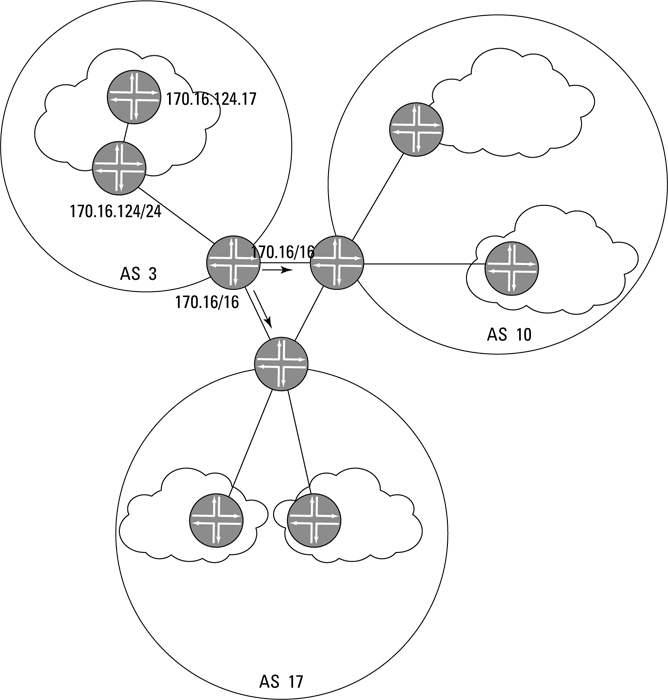Configuring an Aggregate Route
As the number of devices connected to the Internet grows so, too, does the number of IP addresses assigned to those devices. And the more IP addresses, the more routes your router must maintain. Even worse, as the number of routes increases, so does the time it takes to look up next-hop values. Transit time for traffic is dependent, at least in part, on the number of routes that are in each router's routing table. For example, examine Figure 14-4's topology of interconnected networks.
In Figure 14-4, notice the depiction of three separate networks. Each network has been allocated a/16 prefix. A/16 prefix equates to 216 different addresses (216 = 65,535). So, if the entire Internet were to include only these three networks, each device would require 3 × 216 routes in its routing table, a large amount of stored data, not to mention the huge amount of time it would take to look up next hops.
You might think that every device in AS 3 needs a route to every device on AS 17. Everything has to go through the one border router in the figure anyway. It is sufficient to provide a route only to the border router for AS 3, which sends the traffic to AS 17, and the border router in AS 17 knows how to route within its own domain.

Figure 14-4: An example of route aggregation.
In fact, if the gateway router for AS 3 advertises only a summary of all the routes that ...
Get Junos® OS For Dummies®, 2nd Edition now with the O’Reilly learning platform.
O’Reilly members experience books, live events, courses curated by job role, and more from O’Reilly and nearly 200 top publishers.

